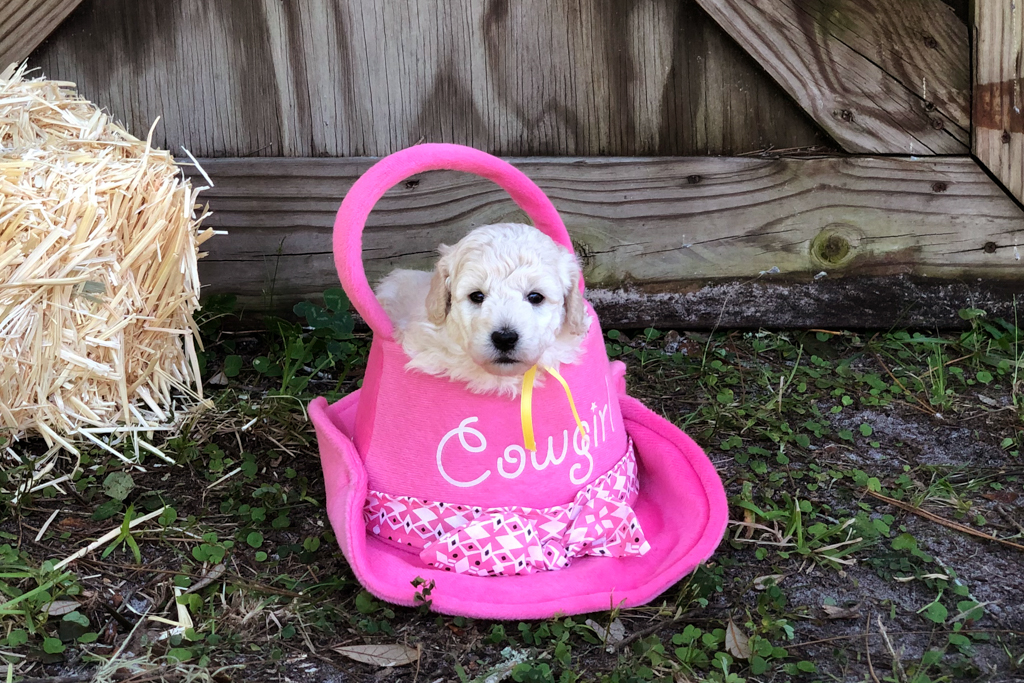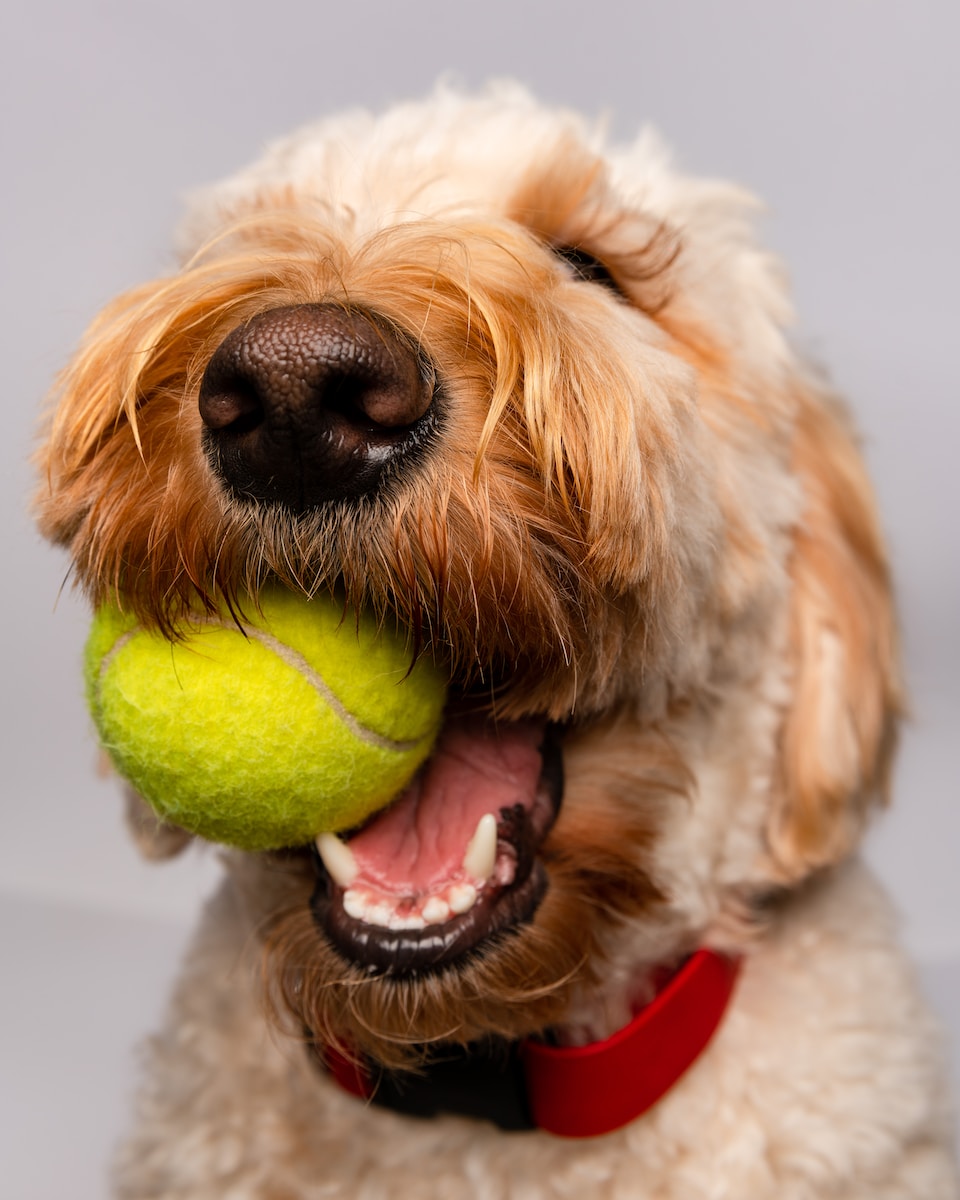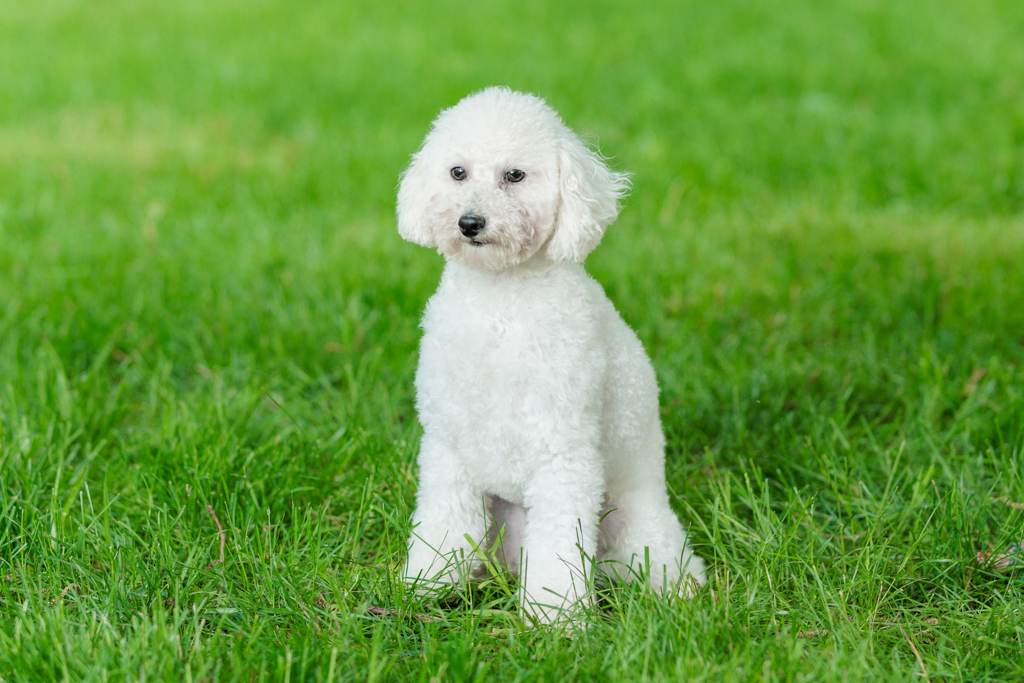Owning an English Cream Minidoodle brings joy, happiness, and loving companionship to your life. These intelligent crossbreeds not only crave your affection and attention but also benefit greatly from mental and physical stimulation. At Royal Minidoodles, we believe in raising healthy, well-tempered dogs that provide their families with years of love, licks, and loyalty. One of the best ways to achieve that is by providing your furry friend with a variety of engaging toys and activities.
In this article, we will explore a curated assortment of toys and activities specifically designed for your English Cream Minidoodle’s growth and development. These recommendations will ensure your pup stays happy, healthy, and entertained while also complementing their instinctual needs and intellectual curiosity. Dive into the world of Minidoodle-approved toys and activities and prepare to enhance your bond with your pup in exciting, stimulating ways.
Interactive Puzzle Toys
Interactive puzzle toys are excellent sources of mental stimulation for intelligent breeds like the English Cream Minidoodle. These toys challenge your pup’s problem-solving skills and provide entertainment that prevents boredom and destructive behavior.
- Kong Classic: The Kong Classic is a versatile, durable toy that can be filled with treats or peanut butter to keep your Minidoodle engaged for hours. The unique shape also provides an unpredictable bounce, adding excitement during playtime.
- Nina Ottosson Puzzle Toys: Designed by Swedish dog trainer Nina Ottosson, these toys come in various difficulty levels, allowing you to choose the appropriate challenge for your Minidoodle. Popular options include the Dog Brick and Dog Tornado.
- Outward Hound Hide-A-Squirrel Puzzle Toy: This plush tree trunk toy contains small stuffed squirrels, inviting your puppy to sniff and dig them out. It encourages natural hunting instincts and keeps your pup intrigued.
Chew Toys for Oral Health and Teething
Chew toys are essential for maintaining your Minidoodle’s oral health and offering relief during the teething phase. They help clean teeth, massage gums, and satisfy their natural chewing instincts.
- Nylabone Puppy Chew Teething Rings: Designed specifically for teething puppies, Nylabone’s Teething Rings are made of soft, durable material that provides a safe chewing outlet while easing discomfort and helping to clean teeth.
- Benebone Real Flavor Wishbone Dog Chew Toy: Made with real food ingredients for flavor, this wishbone-shaped chew toy is specially designed to allow easy gripping for your pup, encouraging extended chew sessions and promoting dental health.
- West Paw Design Zogoflex®: The Zogoflex line offers a range of durable, non-toxic chew toys that are perfect for tough chewers and dental health. Popular options include the Hurley, Tux, and Qwizl.
Tug Toys for Engaging Playtime
Tug toys enable you to engage in interactive playtime with your English Cream Minidoodle, promoting bonding and catering to their natural instincts.
- Tug-A-Jug: A multifunctional toy that promotes interactive play while dispensing treats. Its unique design provides a challenging puzzlesolving element, making it a great choice for tug-of-war games.
- Mammoth Flossy Chews Cottonblend Rope: This sturdy rope toy helps to clean your dog’s teeth and gums while tugging, adding an element of dental health. It also comes in multiple sizes and shapes.
- KONG Tugga Wubba Dog Toy: Designed to cater to your dog’s tugging instincts, this durable toy features two balls covered in reinforced nylon fabric, joined by a strong rope.
Agility Training Equipment
Channel your Minidoodle’s energy and curiosity through training sessions using agility equipment. These activities enhance mental and physical stimulation while reinforcing your bond with your furry companion.
- Dog Agility Starter Kit: This kit includes a jump, weave poles, and a tunnel, providing a basic training ground for teaching your pup agility skills.
- FitPAWS Canine Conditioning Equipment: Offering a range of fitness equipment for dogs, such as balance discs, wobble boards, and activity mats, FitPAWS focuses on improving your dog’s body awareness, flexibility, and strength (source: [https://fitpawsusa.com/]).
- Homemade DIY Agility Course: Create an agility course at home using simple household items such as a hula hoop, makeshift tunnels or PVC pipes, and large stuffed animals as jumps. Customize it to fit your dog’s specific training needs and space availability.
Outdoor Adventures and Socialization
Beyond toys and training, engaging your Minidoodle in outdoor activities and allowing them to socialize play a significant role in their development and satisfaction.
- Dog-friendly Parks and Hiking Trails: Venturing outside your neighborhood to explore dog parks or pet-friendly hiking trails presents an opportunity for your pup to socialize with other dogs and discover new environments, sights, and smells.
- Doggy Daycare or Playgroups: Enrolling your Minidoodle in doggy daycare or joining local playgroups enables them to interact with other dogs in a supervised setting, enhancing their social skills and expending energy.
- Obedience Classes: Attending obedience classes with your Minidoodle not only improves their manners and training but also allows them to socialize and become accustomed to various environments and distractions.
Conclusion
Providing your English Cream Minidoodle with a range of toys and activities encourages mental and physical stimulation, enhances their well-being, and reinforces the bond between you and your furry companion. From interactive puzzle toys and durable chew toys to agility training equipment and outdoor adventures, each option contributes to your pup’s overall development and happiness.
At Royal Minidoodles, we take pride in raising healthy, great-tempered English Cream Minidoodles that bring joy and love to families. Let us help you find the perfect Minidoodle pup to join your family and embark on a journey filled with love, licks, and loyalty. If you’re considering adopting a Minidoodle and want to know more about our breeding practices or available puppies, contact us today and learn more about our adoption process!


